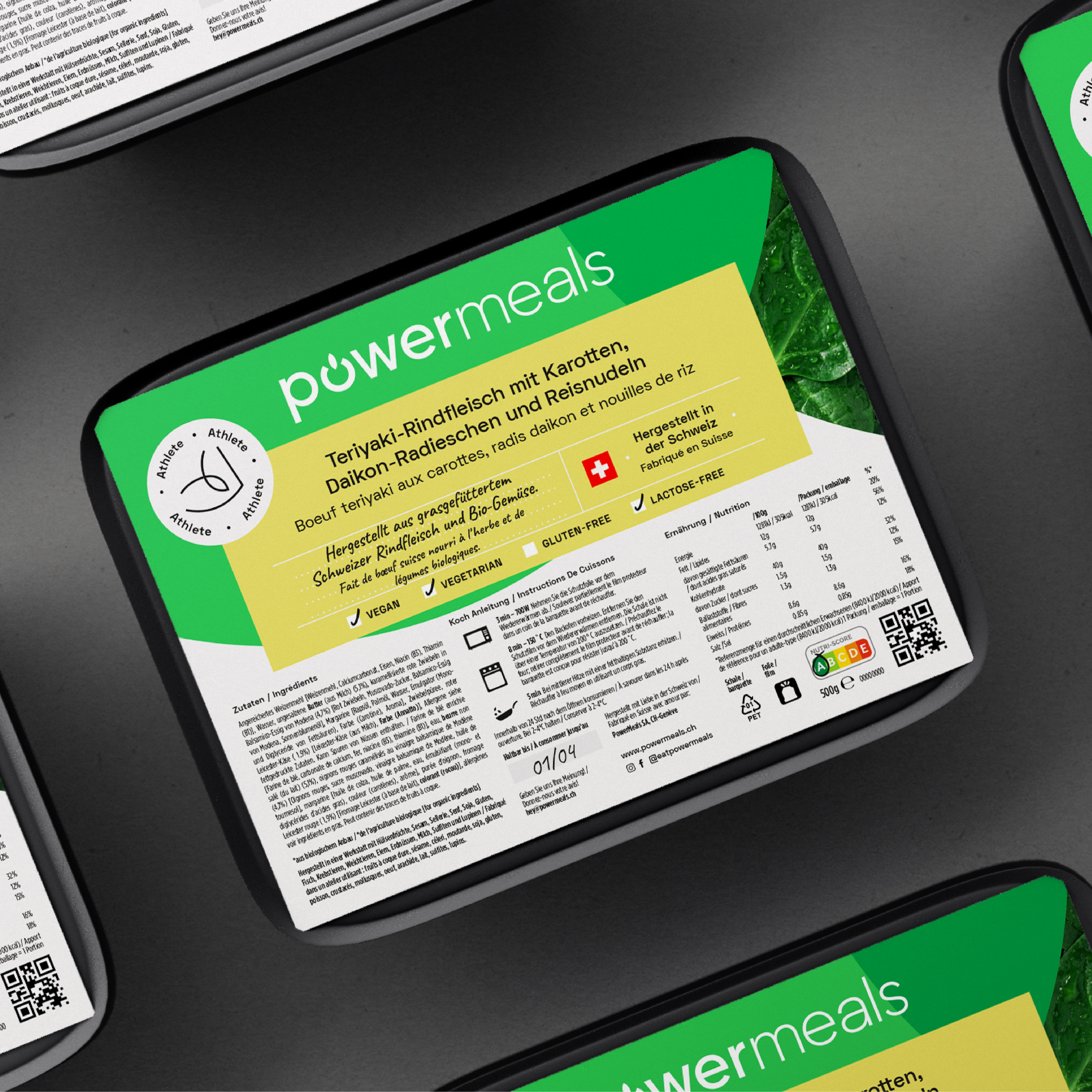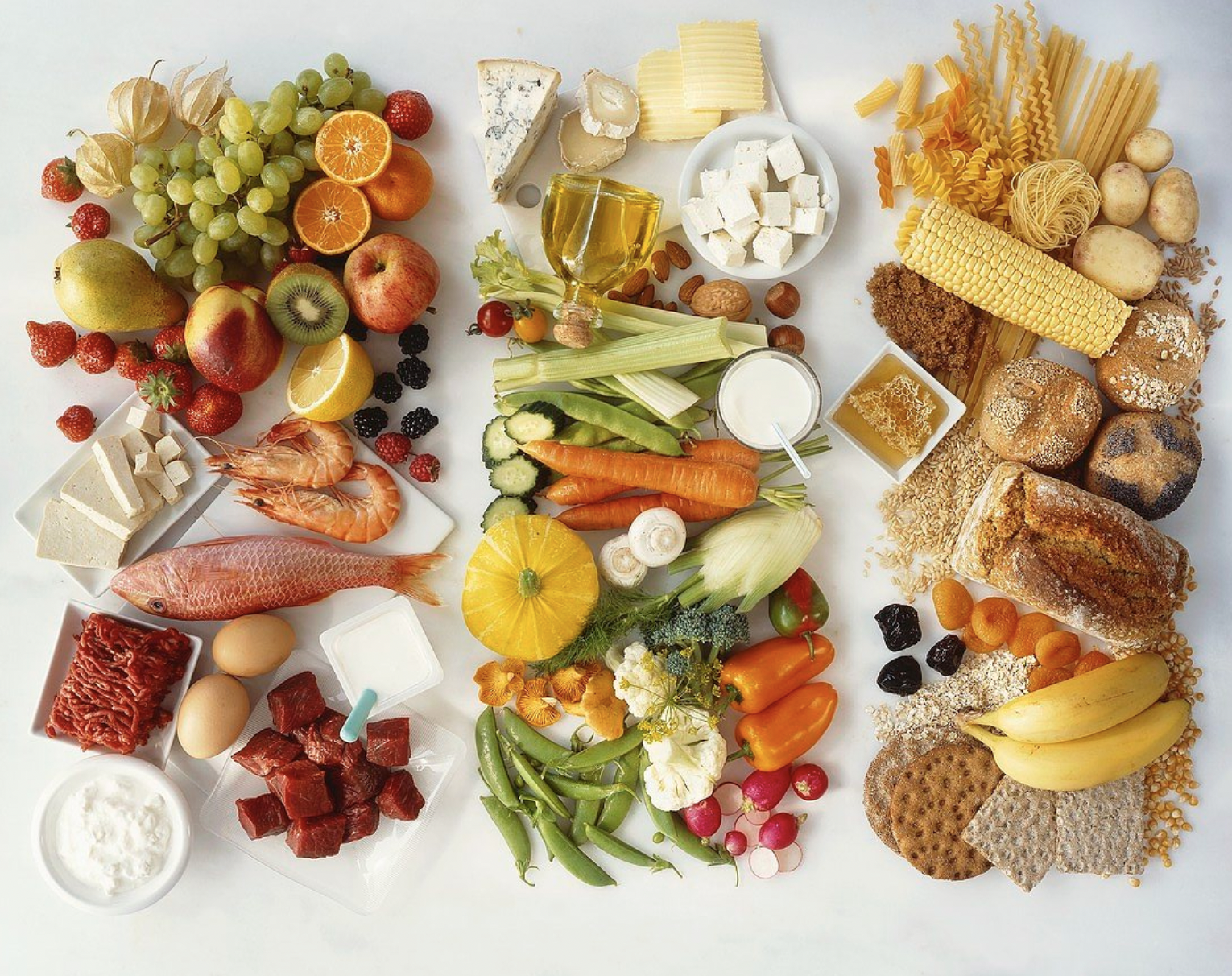What does Nutri Score mean? A colour scale for understanding nutrition

You may have seen a colour scale on many food packages with a rating from A to E, this is the Nutri-Score. It can be a great tool for comparing the healthiness of food. Find out how it's calculated and how you can use it in your diet.
What is Nutri-Score?
Nutri-Score is a way of comparing the nutritional benefits of similar meals. Meals are given a score from A to E based on their ratio of good nutrients (vegetables, protein, fibre...) to bad nutrients (sugar, salt, fat...), with A being the best rating.
The rating is always relative to the product being rated, so a pizza rated A is healthier than a pizza rated C but is still likely to be less healthy than a salad rated C.
As food packaging also contains a full breakdown of ingredients and the nutritional values, but if you’re doing a big shop you’re unlikely to have time to check this list for every product. Rating the meals from A to E gives you a quick and easy comparison of whether a meal is better for you than another similar option.
Unfortunately, including the rating on packaging is still voluntary, so you won’t find it on all dishes. The rating is also only for meals or combinations of ingredients, not on individual ingredients like fresh meat or apples.
Calculating Nutri-Score
The A to E score is calculated by looking at the amount of 7 different elements per 100g of food:
Negative elements considered:
- Energy
- Saturated fats
- Sugars
- Salts
- Protein
- Fibre
- Proportion of fruits, vegetables, pulses, nuts, rapeseed, walnut and olive oils
Before converting to a letter, a numerical score between -15 (best) and +40 (worst) is calculated. The numerical score is then converted to a letter using the following:
- A: less than -1
- B: 0 to 2
- C: 3 to 10
- D: 11 to 18
- E: over 19
To calculate the numerical score energy, sugars, salts and saturated fats each contribute between 0 and 10 points depending on what proportion of your recommended daily intake they represent. Between 0 and -5 points are then added for each of the 3 positive elements depending how much volume of each the dish contains.
In general the points per category are assigned based on the following tables, although this will vary for different types of food:
Contribution of negative elements:
|
Points |
Energy (kJ/100g) |
Sugars (g/100g) |
Saturated fats (g/100g) |
Salts (mg/100g) |
|
0 |
<335 |
<4.5 |
<1 |
<90 |
|
1 |
>335 |
>4.5 |
>1 |
>90 |
|
2 |
>670 |
>9 |
>2 |
>180 |
|
3 |
>1005 |
>13.5 |
>3 |
>270 |
|
4 |
>1340 |
>18 |
>4 |
>360 |
|
5 |
>1675 |
>22.5 |
>5 |
>450 |
|
6 |
>2010 |
>27 |
>6 |
>540 |
|
7 |
>2345 |
>31 |
>7 |
>630 |
|
8 |
>2680 |
>36 |
>8 |
>720 |
|
9 |
>3015 |
>40 |
>9 |
>810 |
|
10 |
>3350 |
>45 |
>10 |
>900 |
Contribution of positive elements:
|
Points |
Fruits, vegetables, pulses etc. (%) |
Fibre (g/100g) |
Protein (g/100g) |
|
0 |
<40 |
<0.9 |
<1.6 |
|
-1 |
>40 |
>0.9 |
>1.6 |
|
-2 |
>60 |
>1.9 |
>3.2 |
|
-3 |
- |
>2.8 |
>4.8 |
|
-4 |
- |
>3.7 |
>6.4 |
|
-5 |
>80 |
>4.7 |
>8.0 |
You can find even more detail on calculating Nutri-Score here.
How are the scores managed and monitored?
The Nutri-Score used in Switzerland and much of Europe was created by the French public health agency, Santé Publique France. In February 2021 authorities in Switzerland, Belgium, France, Spain, Germany, Luxembourg and the Netherlands agreed to ensure their labels were co-ordinated. Within Switzerland adoption is supported by the FSVO.
Should I only eat meals rated A?
Sticking to only A and B ratings doesn’t guarantee a healthy diet. It’s important to remember that the score is relative to the dish you’re buying. If you’re eating A and B rated pizzas for every meal you still won’t get the nutrients you need and you might be consuming more than the recommended daily amount of fat and salt.
A healthy diet also doesn’t need to consist only of A or B rated products, just as a healthy diet doesn’t need to wipe out salt, sugar and fat. We wouldn’t recommend eating a lot of D and E rated products every week, but try and find a balance that works for you and makes you feel great.
How should I use Nutri-Score?
If you’re choosing between 2 similar products then the A to E rating can be a great tie breaker for which product to choose.
Don’t get too hung up on the score, a few D and E dishes won’t do you any harm, but you shouldn’t eat them for every meal. Variety is also important to ensure you get all the nutrients your body needs, so try and choose different dishes instead of always getting the same A or B dish.
At Powermeals all our meals are labelled with a Nutri-Score to help when you’re choosing your dishes. Every dish contains protein and veggies to ensure a healthy balance and we rotate our menus every week so you’ll always get plenty of variety.
Tired of cooking?
Check out the Powermeals menu and get ready-to-eat meals delivered directly to your door.

.jpg)
